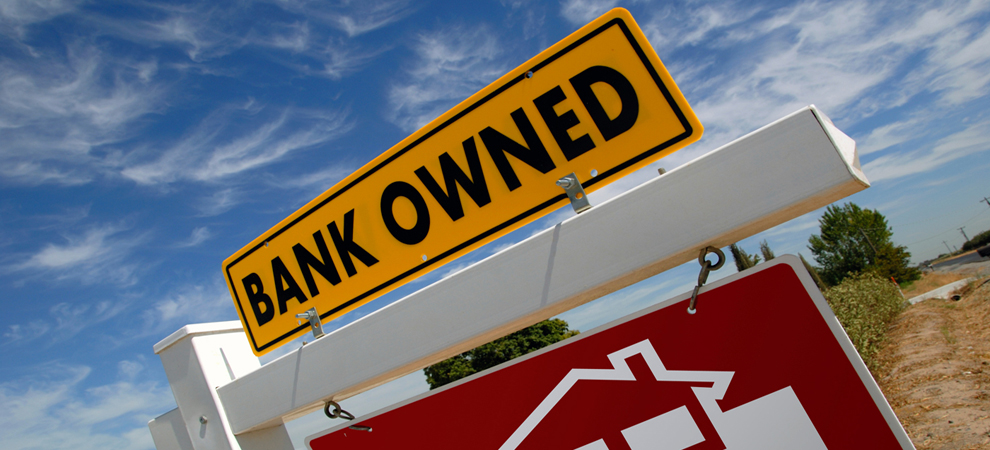The WPJ
THE WORLD PROPERTY JOURNALReal Estate Facts Not Fiction
Residential Real Estate News

U.S. Mortgage Delinquencies Spike During Second Quarter
Residential News » Washington D.C. Edition | By WPJ Staff | August 19, 2020 8:16 AM ET
Based on the Mortgage Bankers Association's latest National Delinquency Survey, the delinquency rate for mortgage loans on one-to-four-unit residential properties increased to a seasonally adjusted rate of 8.22 percent of all loans outstanding at the end of the second quarter of 2020.
The delinquency rate increased 386 basis points from the first quarter of 2020 and was up 369 basis points from one year ago. For the purposes of the survey, MBA asks servicers to report loans in forbearance as delinquent if the payment was not made based on the original terms of the mortgage.

Marina Walsh
Added Walsh, "There was also a movement of loans to later stages of delinquency, with the 60-day delinquency rate reaching a new survey-high, and the 90+-day delinquency rate climbing to its highest level since the third quarter of 2010. On a more positive note, 30-day delinquencies dropped in the second quarter, which is an indication that the flood of new delinquencies may be dissipating."
Mortgage delinquencies track closely with the availability of jobs. The five states with the largest quarterly increases in delinquency rates were New Jersey, Nevada, New York, Florida, and Hawaii - all with a prevalence of leisure and hospitality jobs that were especially hard-hit by the COVID-19 pandemic.
"The job market has improved over the past three months, with the unemployment rate falling for the third straight month from an April peak of 14.7 percent to 10.2 percent in July. This bright spot in the jobs picture is tempered by numerous uncertainties, including the ambiguous status of enhanced unemployment benefits and other stimulus measures, the recent surge in new COVID-19 cases, and the retrenchment from reopening in certain states," said Walsh. "And there is no way to sugarcoat a 32.9 percent drop in GDP during the second quarter. Certain homeowners, particularly those with FHA loans, will continue to be impacted by this crisis, and delinquencies are likely to stay at elevated levels for the foreseeable future."
Added Walsh, "Fortunately, there are several mitigating factors that make this current spike in mortgage delinquencies different from the Great Recession. These factors include home-price gains, several years of home equity accumulation, and the loan deferral and modification options that present alternatives to foreclosure for distressed homeowners."
Key findings of MBA's Second Quarter of 2020 National Delinquency Survey:
- Compared to last quarter, the seasonally adjusted total mortgage delinquency rate increased for all loans outstanding. By stage, the 30-day delinquency rate decreased 33 basis points to 2.34 percent, the 60-day delinquency rate increased 138 basis points to 2.15 percent - the highest rate since the survey began in 1979 - and the 90-day delinquency bucket increased 279 basis points to 3.72 percent - the highest rate since the third quarter of 2010.
- By loan type, the total delinquency rate for conventional loans increased 352 basis points to6.68 percent over the previous quarter, the highest rate since the third quarter of 2012. The FHA delinquency rate increased 596 basis points to 15.65 percent - the highest rate since the survey began in 1979. The VA delinquency rate increased by 340 basis points to 8.05 percent over the previous quarter, the highest rate since third quarter of 2009.
- On a year-over-year basis, total mortgage delinquencies increased for all loans outstanding. The delinquency rate increased by 307 basis points for conventional loans, increased 643 basis points for FHA loans, and increased 381 basis points for VA loans.
- The delinquency rate includes loans that are at least one payment past due, but does not include loans in the process of foreclosure. The percentage of loans in the foreclosure process at the end of the second quarter was 0.68 percent, down 5 basis points from the first quarter of2020 and 22 basis points lower than one year ago.
- The percentage of loans on which foreclosure actions were started in the second quarter fell by 16 basis points from the first quarter to 0.03 percent.
- The seriously delinquent rate, the percentage of loans that are 90 days or more past due or in the process of foreclosure, was 4.26 percent, the highest rate since fourth quarter of 2014. It Increased by 259 basis points from last quarter and increased by 231 basis points from last year. The seriously delinquent rate increased 219 basis points for conventional loans, increased467 basis points for FHA loans, and increased 218 basis points for VA loans from the previous quarter. Compared to a year ago, the seriously delinquent rate increased by 184 basis points for conventional loans, increased 453 basis points for FHA loans, and increased 217 basis points for VA loans.
- The five states with the largest quarterly increases in their overall delinquency rate were: New Jersey (628 basis points), Nevada (600 basis points), New York (575 basis points), Florida (569 basis points), and Hawaii (525 basis points).
Sign Up Free | The WPJ Weekly Newsletter
Relevant real estate news.
Actionable market intelligence.
Right to your inbox every week.
Real Estate Listings Showcase
Related News Stories
Residential Real Estate Headlines
- Las Vegas Area Home Prices Uptick 4.3 Percent Annually in March
- Single-Family Rent Growth in U.S. Trends Upward in 2025
- U.S. Mortgage Rates Tick Down Post Trump Tariffs Commencement
- President Trump's 'Liberation Day' Tariffs Potential Impact on the U.S. Housing and Mortgage Markets
- Baby Boomers Biggest Cohort of U.S. Home Buyers in 2025 as Millennials Decline
- U.S. Monthly Housing Payments Hit Record High in 2025
- U.S. Pending Home Sales Uptick in February
- Global Prime Residential Rent Slowdown Continued in Late 2024
- Ireland Home Price Inflation Hits 8 Year High in Early 2025
- Existing Home Sales in America Uptick in February
- Great Miami Area Residential Sales Decline 15 Percent Annually in February
- Mortgage Rates Uptick in Mid-March, Ending 9-Week Decline in U.S.
- World Property Ventures Builds the Future of Real Estate with New Funding Round
- U.S. Builder Sentiment Declines Amid Economic Uncertainty and Rising Costs
- Black Homeownership Rates in U.S. Enjoy Largest Annual Increase of All Racial Groups
- Wealthy Renters Are Taking Over More of the U.S. Rental Market
- If U.S. Congress Does Not Extend NFIP Soon, Thousands of Daily Home Closings Impacted
- U.S. Mortgage Applications Spike 11 Percent in Early March
- Greater Palm Beach Area Residential Sales Rise in Early 2025
- New Apartments in U.S. Are Leasing at Slowest Pace on Record
- U.S. Mortgage Rates Drop to 4 Month Low in March
- Overall U.S. Mortgage Delinquency Rates Dip in December
- New Tariffs on Canada, Mexico to Impact U.S. Homebuilder Input Costs
- Monaco's Property Market: A Tale of Two Cities
- U.S. Home Purchase Cancellations Surge, 1 in 7 Sales Getting Canceled
- U.S. Pending Home Sales Hit Historic Low in Early 2025
- Greater Miami Area Residential Sales Dip in January
- Governor DeSantis Supports Ending Property Taxes in Florida
- WPV Aims to Become the Berkshire Hathaway of Real Estate Tech
- U.S. Home Sales Slump Continues in January
- Average Americans Spend 38 Percent of Monthly Income on Mortgage Payments
- Switzerland's Safe-Haven Appeal Grows with World's Wealthy Homebuyers
- U.S. Builder Confidence Rapidly Declines in February
- Las Vegas Home Sales Rise 6.7 Percent Annually in January, Condo Sales Dip
- Homebuyer Demand in America Drops to 5-Year Low in Early 2025
- Ownership More Affordable Than Renting in Most U.S. Markets
- The World's First Global Listings Service Launches, Called a GLS
- Home Prices Continue to Rise in 89 Percent of U.S. Metros in Late 2024
- Global Luxury Residential Prices Showed Gradual Improvement in Late 2024
- U.S. Construction Hiring Rate Drops to Lowest Levels in 5 Years
Reader Poll
Marketplace Links
This website uses cookies to improve user experience. By using our website you consent in accordance with our Cookie Policy. Read More





